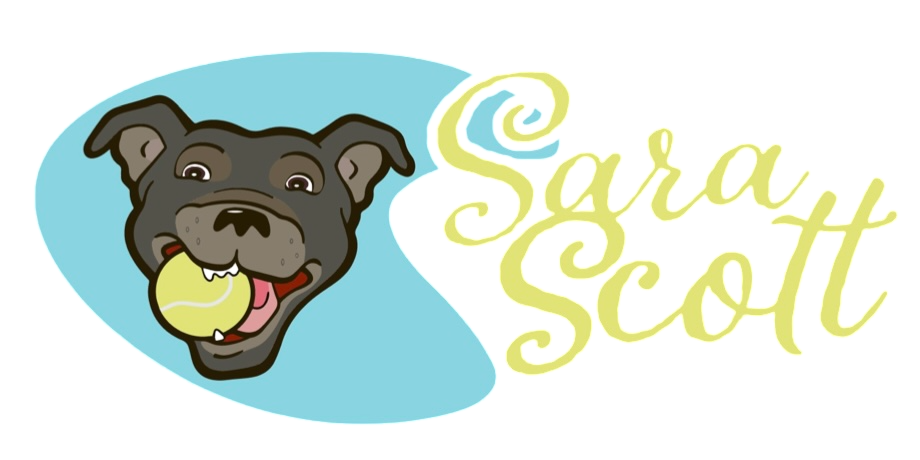Management Strategies for Handling Leash Reactivity in the City
- Sara Scott

- Oct 19, 2023
- 3 min read
Updated: Oct 24, 2023
Living with a reactive dog in an urban area brings unique challenges when navigating crowded sidewalks and stimulating environments. While training is crucial for addressing reactivity long-term, management strategies help keep dogs under threshold and prevent reactions during walks. Let’s explore practical techniques for handling leash reactivity in busy city spaces.

Defining Reactivity
First, leash reactivity refers to dogs who display excessive barking, lunging, or pulling when encountering triggers like strangers or dogs while out walking. It’s driven by a combination of fear, overexcitement, or frustration. With management and training, it can be overcome.
While structured counterconditioning and desensitization training is the standard protocol for addressing leash reactivity long-term, implementing preventive management strategies is a critical first step. Preventing reactions through careful management reduces the rehearsal and reinforcement of unwanted reactive responses. Management lays the groundwork that allows counterconditioning and desensitization techniques to truly reshape your dog’s emotional responses when implemented.
Y-Shaped Back-Clip Harnesses
Y-shaped back-clip harnesses attach at the dog's back, allowing comfortable forward motion during normal walking. These types are the healthiest for the dogs body, avoiding irritation and joint/nerve pressure compared to other styles. While ideal for the dog's body, the owner must weigh risks of injury from loss of control against benefits of the y-shape for their particular situation. For owners with dogs who can over power them physically, these harnesses may present challenges controlling lunging compared to options.
The Leash Belay Technique
Creator of B.A.T. training, Grisha Stewart created the "leash belay" technique where you loop the leash through a pulley system that connects to your waist, similar to what is used with rock climbing. This allows the force of lunging to be absorbed by the pulley and not your body using rock climbing principles. It provides an emergency brake without whiplash and is a great choice for dogs who can otherwise physically overpower their owner.
Front-Clip Harnesses
Front-clip harnesses redirect a dog back toward you when they pull thanks to the chest leash attachment. This can provide some control if they lunge. Look for styles with multiple adjustment points for proper fit.
Treat Scattering
Throwing treats or handfuls of kibble on the ground creates a sniffing scatter buffet that redirects your dog’s attention and eyes to the floor. This works well if you spot a potential reaction brewing. Bring a bait pouch for easy access.
The Food Magnet
Bring high-value treats and hold them right under your dog's nose like a magnet. Quickly move the food away to redirect their nose position and attention from triggers. Food magnets leverage motivation to gain focus, quickly move the dog and provide an emergency distraction when needed.
Lickable Treats
Fill a squeezable tube with something ultra-lickable like peanut butter, wet dog food, or even use spray cheese. When you spot a trigger, quickly present the tube and let your dog lick. This can keep your dog from looking in the direction of their trigger or used to get them to move in any direction easily. Having a continous licking treat prevents reactive behaviors from being rehearsed.

Utilizing Obstacles
Use cars, buildings, trees, corners or bushes as visual barriers between your dog and their triggers. Create as much distance as possible from the stimulus while keeping your dog’s line of vision obscured. This prevents reactions before they start.
Choosing Off-Hours
Aiming for less crowded times like mid day limits the likelihood of encounters with triggers. Scheduling during typical work and school hours or on rainy days can provide a calmer atmosphere.
Training Emergency Behaviors
Teach U-turns, quick retreats, jumping up on objects or paw targeting to prevent reactions. Use high-value rewards to reinforce these behaviors often on walks, not just when you need them.
Sniffspot Alternative
If city walking is too overstimulating, renting enclosed Sniffspot yards provides off-leash time without encountering other dogs. Letting your dog decompresses fully prevents pent-up reactivity from limited outdoor time.
The key is utilizing every management tool possible to set your reactive dog up for success in navigating the urban jungle. Consistently preventing reactions avoids strengthening the behavior. With diligence and creativity, peaceful city walks are possible.
Is your city pup struggling with frequent reactions on walks? As a certified professional dog trainer, I provide customized leash reactivity training programs while collaborating closely with my clients on preventive management strategies for the interim.
My individualized training protocols address the root emotional causes of reactivity through desensitization, counterconditioning and positive reinforcement. In tandem, I offer guidance tailored to your unique situation on management techniques - from proper equipment choices to high value food redirection - that prevent reactions in the moment as progress is made.
Ready to unlock peaceful urban walks? Click here to learn more about my personalized leash reactivity training services. Let's schedule a consultation to start strategizing on management and modification. With diligence and creativity, we can succeed in navigating the urban jungle calmly!




Comments